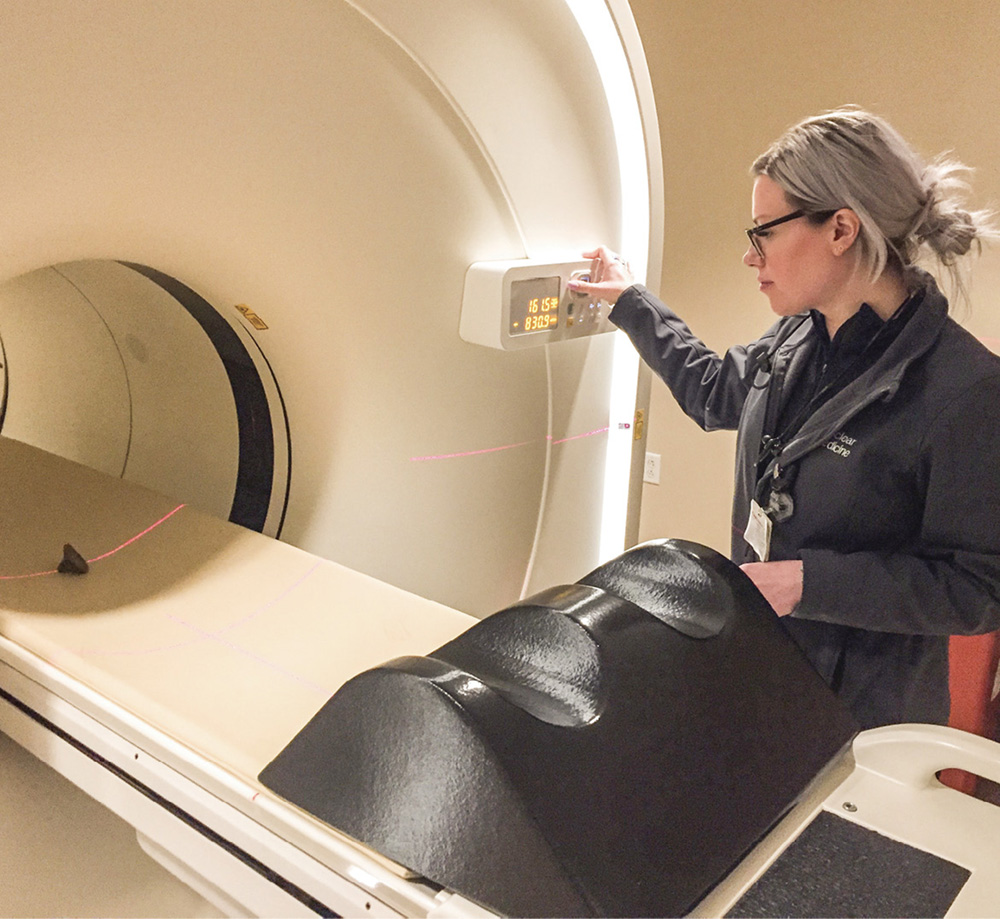
When the Vanderbilt University Institute of Imaging Science installed a new state-of-the-art PET/CT scanner in early 2018, the team probably never imagined it would be used for an art exhibition.
Recently, however, VUIIS partnered with the Vanderbilt University Fine Arts Gallery to scan and create replicas of ancient Mesoamerican artifacts for a hands-on experience in the gallery’s exhibition Refuting “Noble Savages”: Reflections of Nature in Ancient Mesoamerican Artifacts, on view through Sept. 13.
The imaging team used the scanner to capture detailed pictures of each item’s surface and openings and sent the data to a 3D printer to print polymer replicas. Undergraduate students from various departments within the College of Arts and Science curated the exhibition, creating three replicas that were made to look like the original objects: an ancient flute and two ink stamps.
“The Fine Arts Gallery has to secure its artifacts behind glass, so 3D replicas help us make these objects accessible to visitors,” says Markus Eberl, associate professor of anthropology, who led the undergraduate class. “They can pick up the flute and play it. They can ink stamp replicas to reproduce the patterns engraved on the original stamps.”
“It’s a way for visitors not only to get closer to the objects, but to the psychology and experiences of the people who originally used them,” says Emily Weiner, assistant curator for the Fine Arts Gallery.
“It was exciting for us to partner with the Vanderbilt Fine Arts Gallery to do something completely out of the box,” says Seth Smith, associate professor of radiology and radiological sciences and associate director of VUIIS. “We were excited to develop a new relationship brought about because of the existence of a new imaging device within VUIIS. This is a bridge we don’t often get to see, and personally I find it to be fascinating and encouraging.”
The partnership also allowed the team to learn more about the device’s capabilities.
“This project was especially valuable as it provided the opportunity to test different aspects of our scanner’s imaging and reconstruction software which had not been previously explored,” says Anna Fisher, nuclear medicine PET technologist. “We were able to acquire high-resolution CT images of each piece and successfully convert the data into 3D-printable formats, all from the scanner itself. Discovering these unique capabilities has opened the door to new services we can provide here at VUIIS.”
—Kelsey Herbers